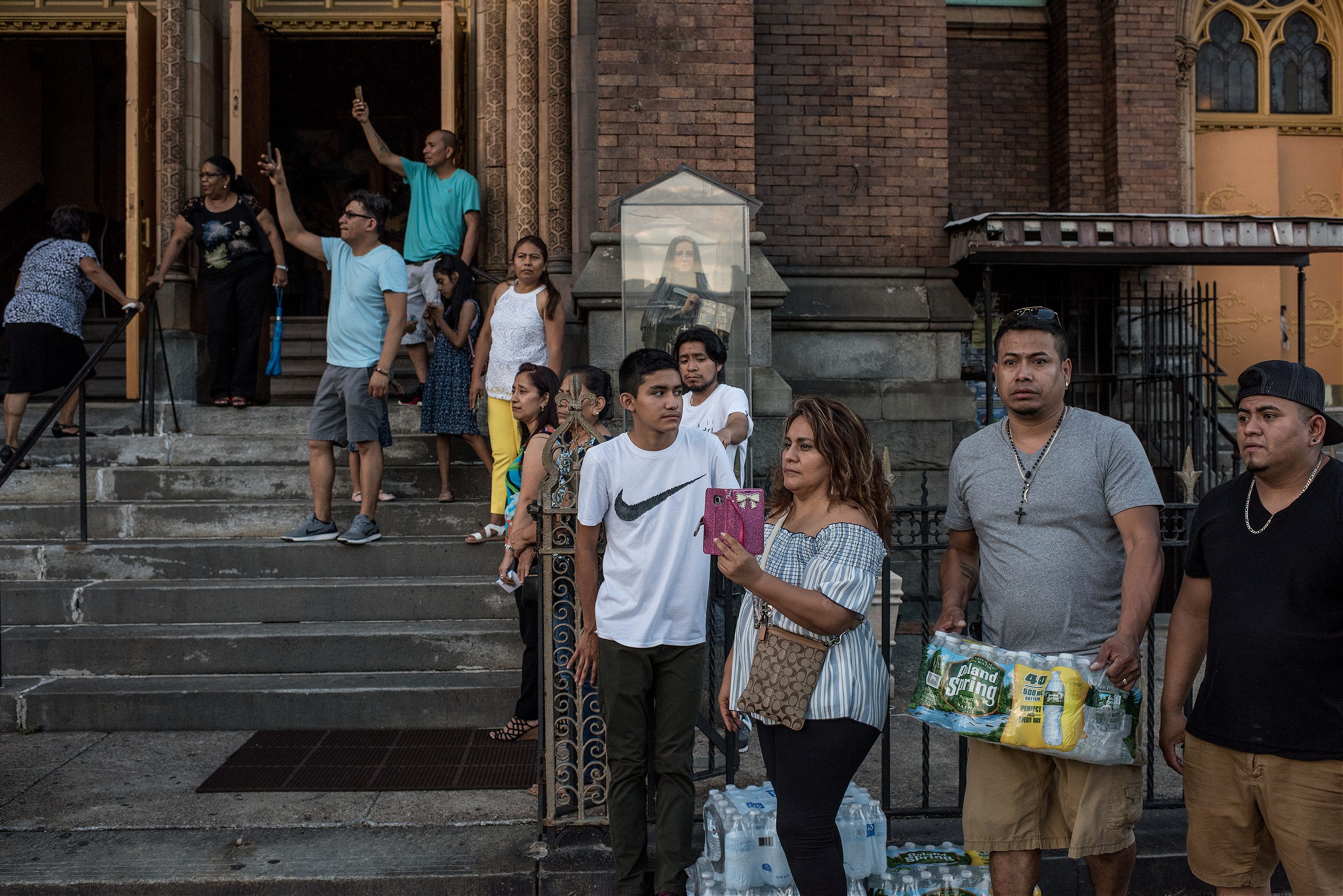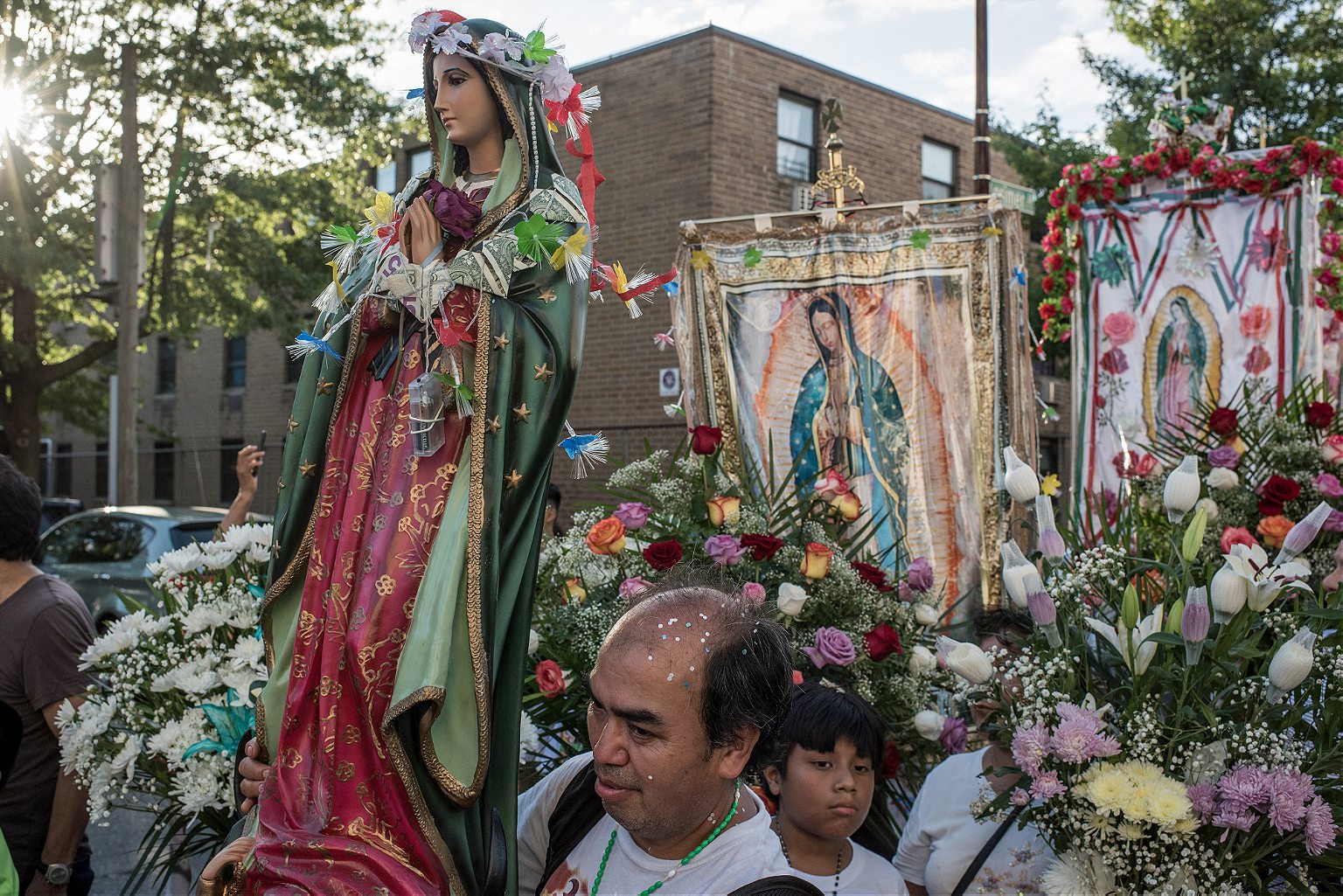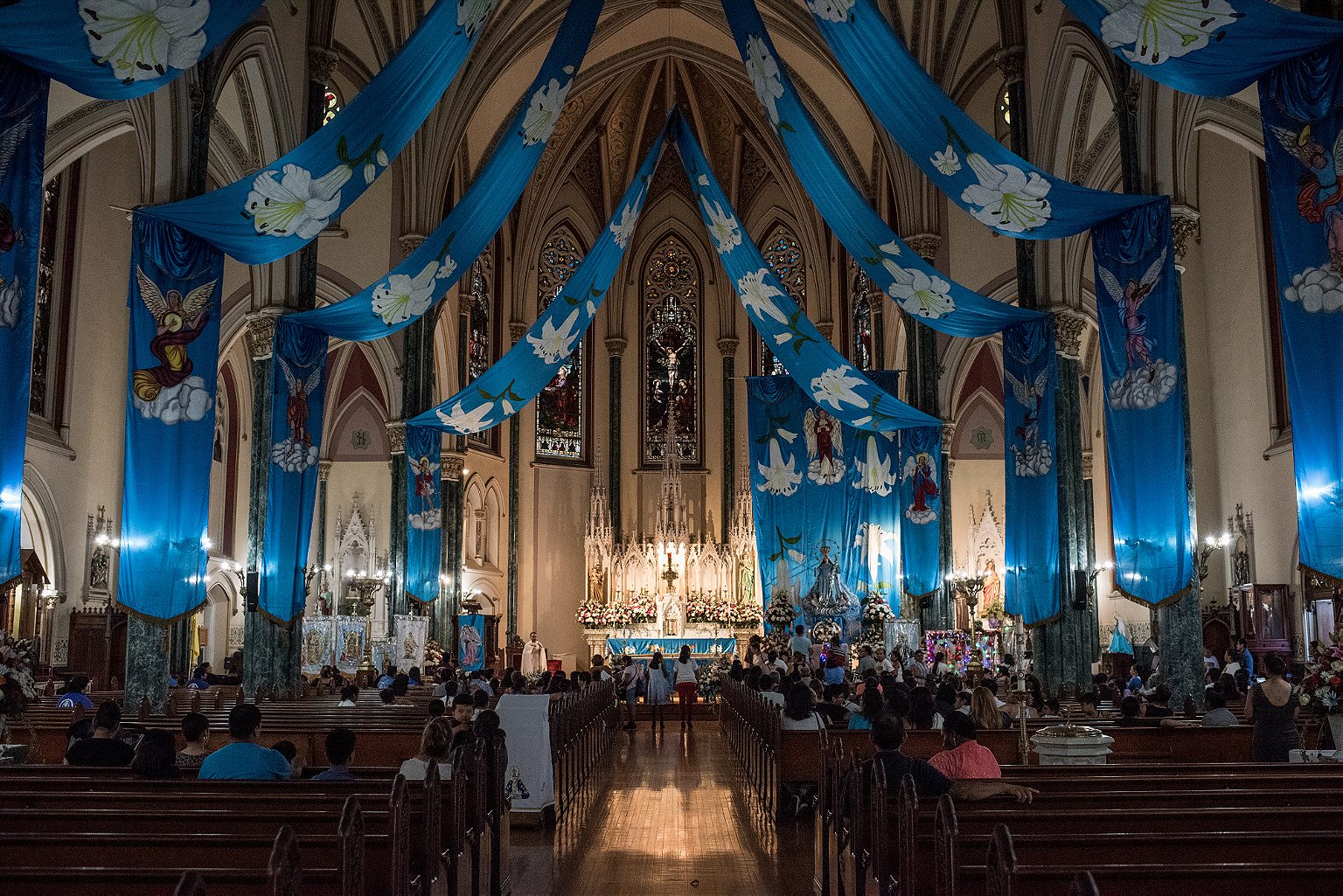Not everyone with roots in the Mexican town of Piaxtla can make it home to celebrate their patron saint—so they created a New York version.
August is a crazy month for the thousands of immigrants with roots in the Mexican town of Piaxtla. It’s the month they celebrate their patron saint, Our Lady of Assumption. Although August 15th is the official celebration date, the festival tends to be a week-long affair, with months of planning.
Most of the funds for the festival are provided by migrants who left Piaxtla—mainly for New York City—throughout the late 20th century in search of work and economic opportunity. But Piaxtecos have a great memory, and every August, thousands of Piaxtecos from home and abroad congregate in this town of nearly 5,000 people to celebrate their patron saint with a series of parades, traditional dances, horse races, soccer matches, concerts, and markets.
But not everyone from Piaxtla can make it to the annual festival, due to work commitments, lack of funds, or even immigration constraints. For the past 31 years, Piaxtecos in New York City have held their own celebration there. Always held a week before the main festival in Piaxtla, the New York version includes just a few of the events that commemorate the holiday back in Piaxtla, but it’s not to be missed. Dozens of Piaxtecos who moved to other parts of the Eastern seaboard converge on the city that most Piaxtecos in the United States call home. It’s through this festival that Piaxtecos keep their town’s traditions and heritage alive.
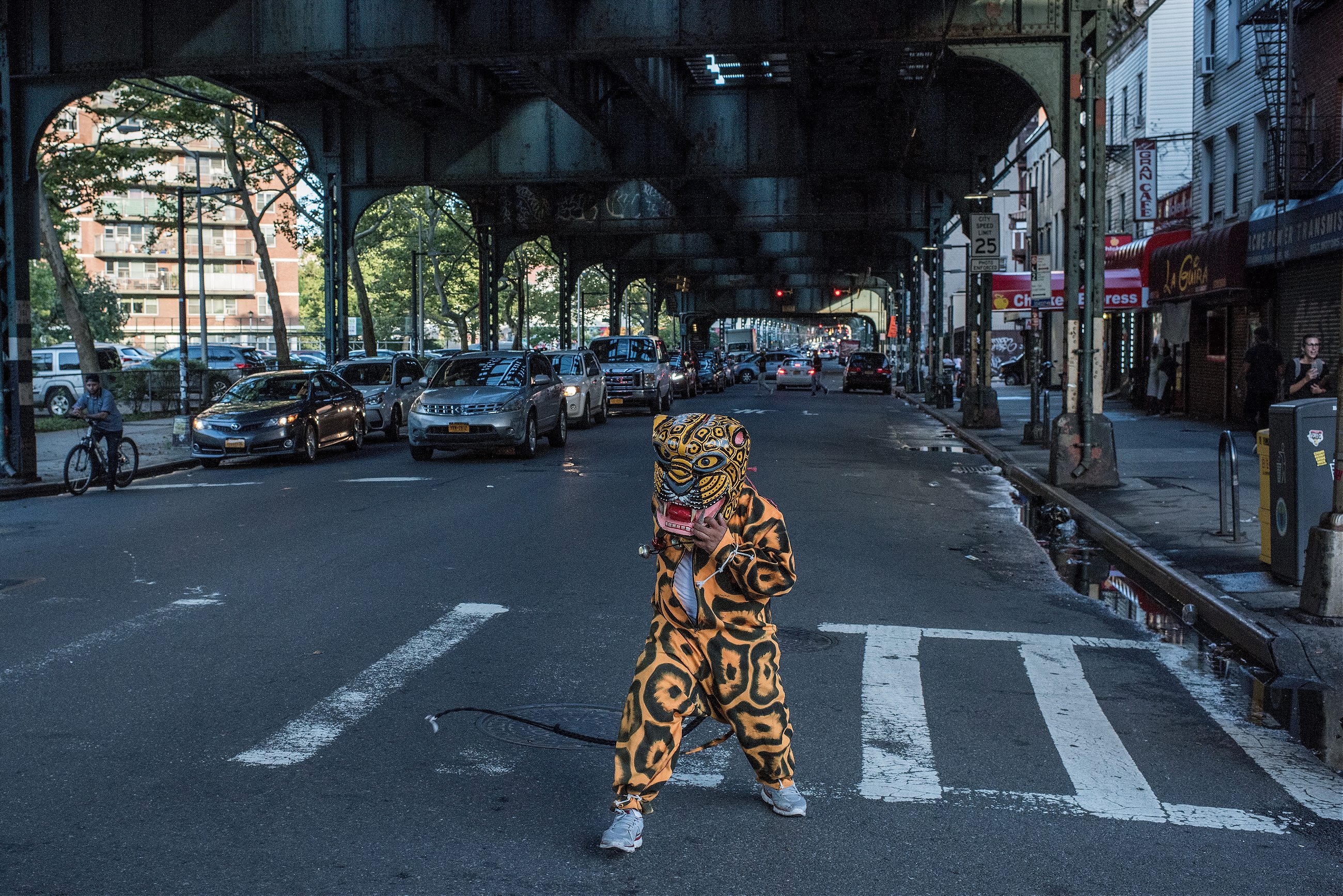
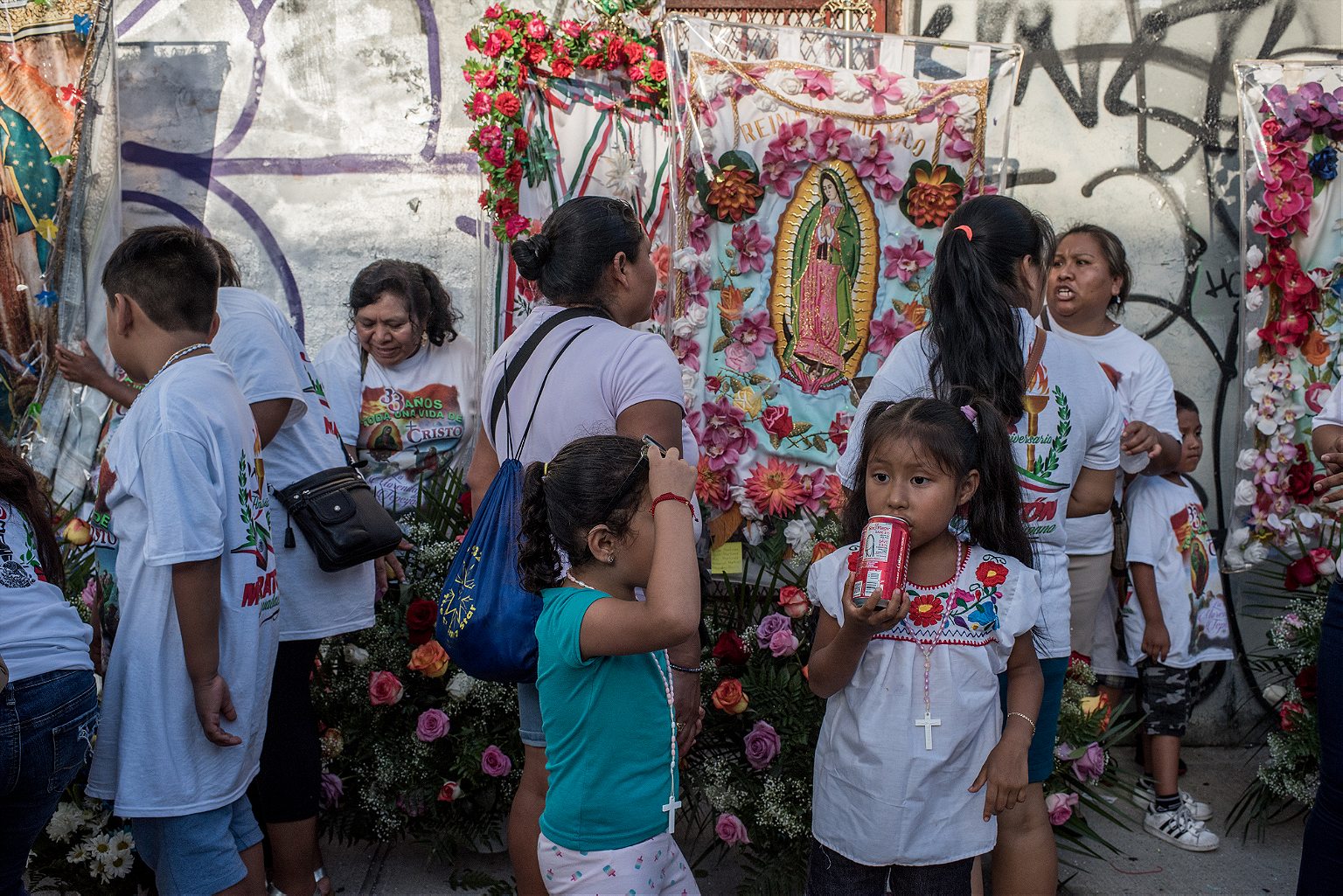
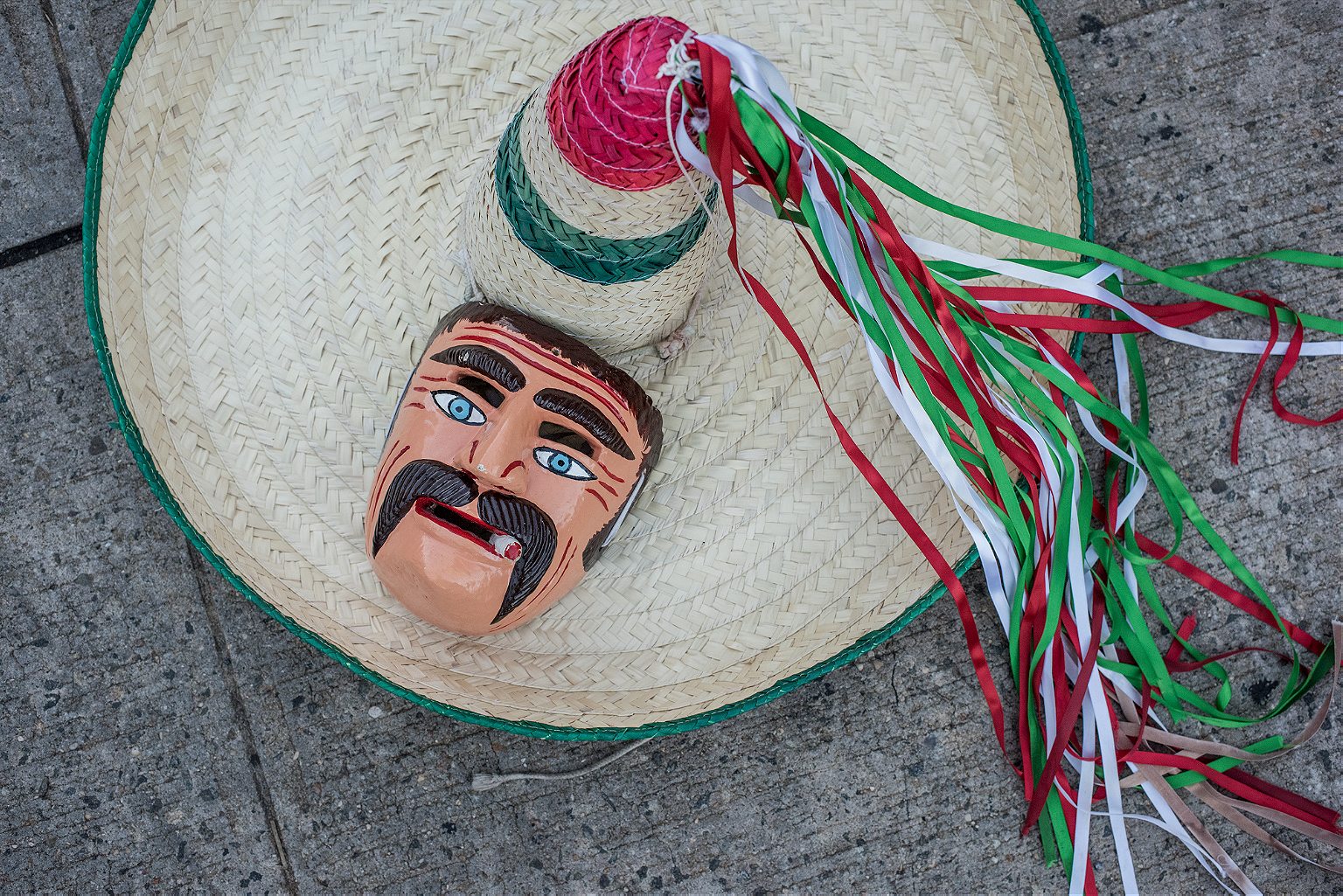
Piaxtla, like Mexico itself, is marked by a mixture of Spanish and pre-Hispanic traditions, and perhaps nowhere is this blend more evident than in the procession—in which members of the community carry a statue of Our Lady of Assumption to the main church’s altar. Masked folk-dancers accompany the procession, the most prominent of them being the tecaunes.
In the dance of the tecuanes, two sets of dancers wearing masks resembling old men and mariachi clothes to represent the Zapotec and Chichimec tribes perform behind a man dressed as a jaguar or tecuan (derived from the Nahuatl word for “devourer of humans”).
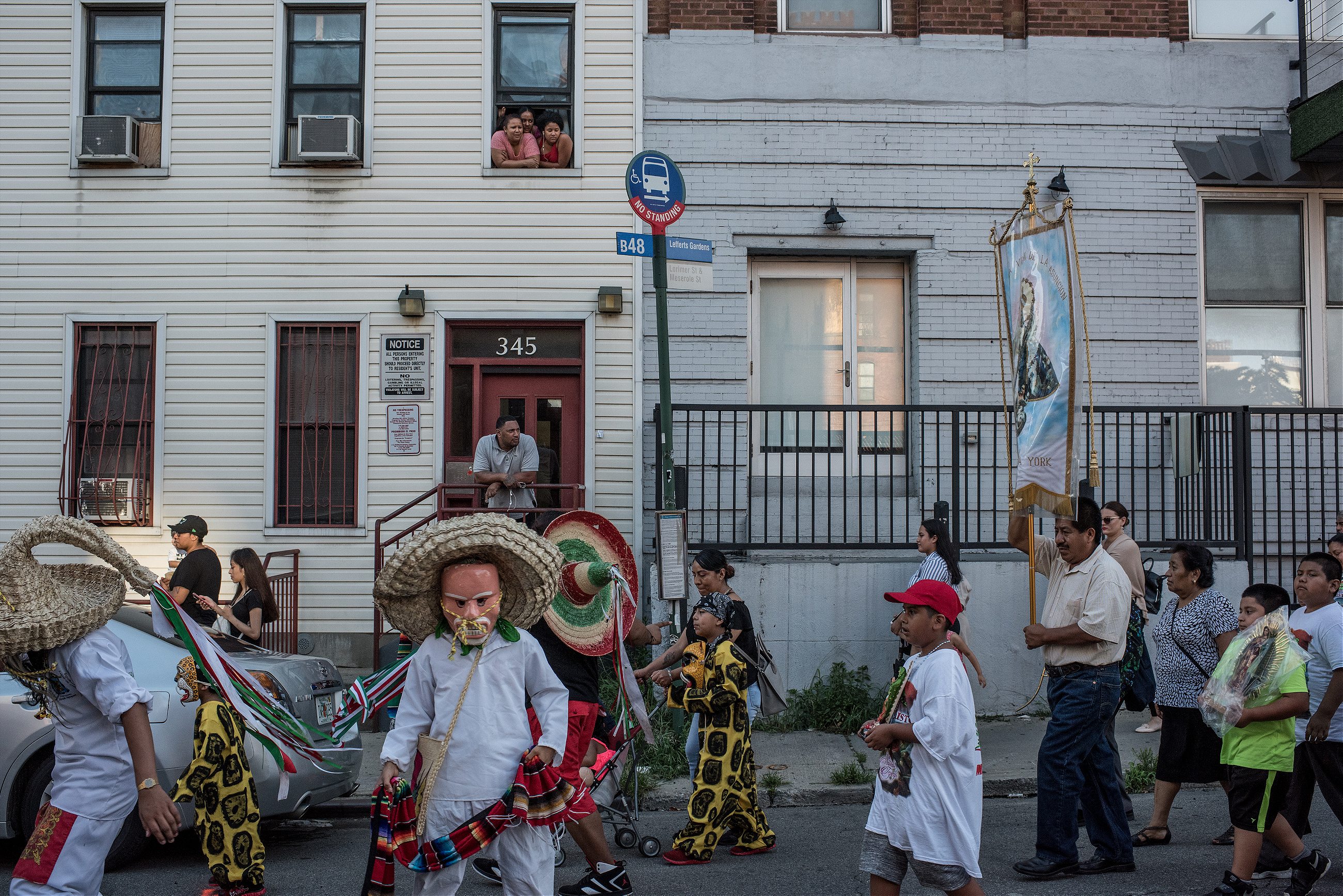
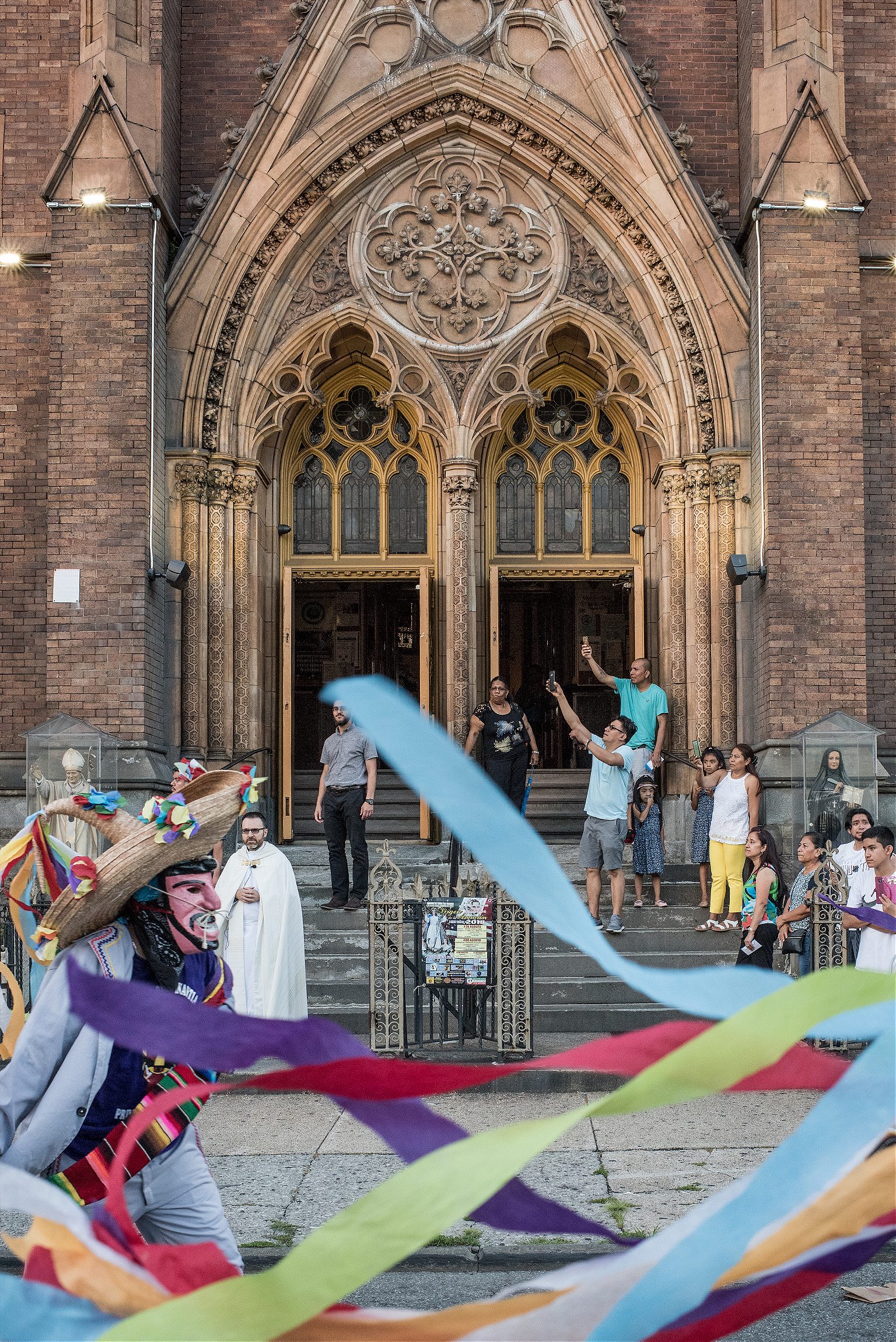
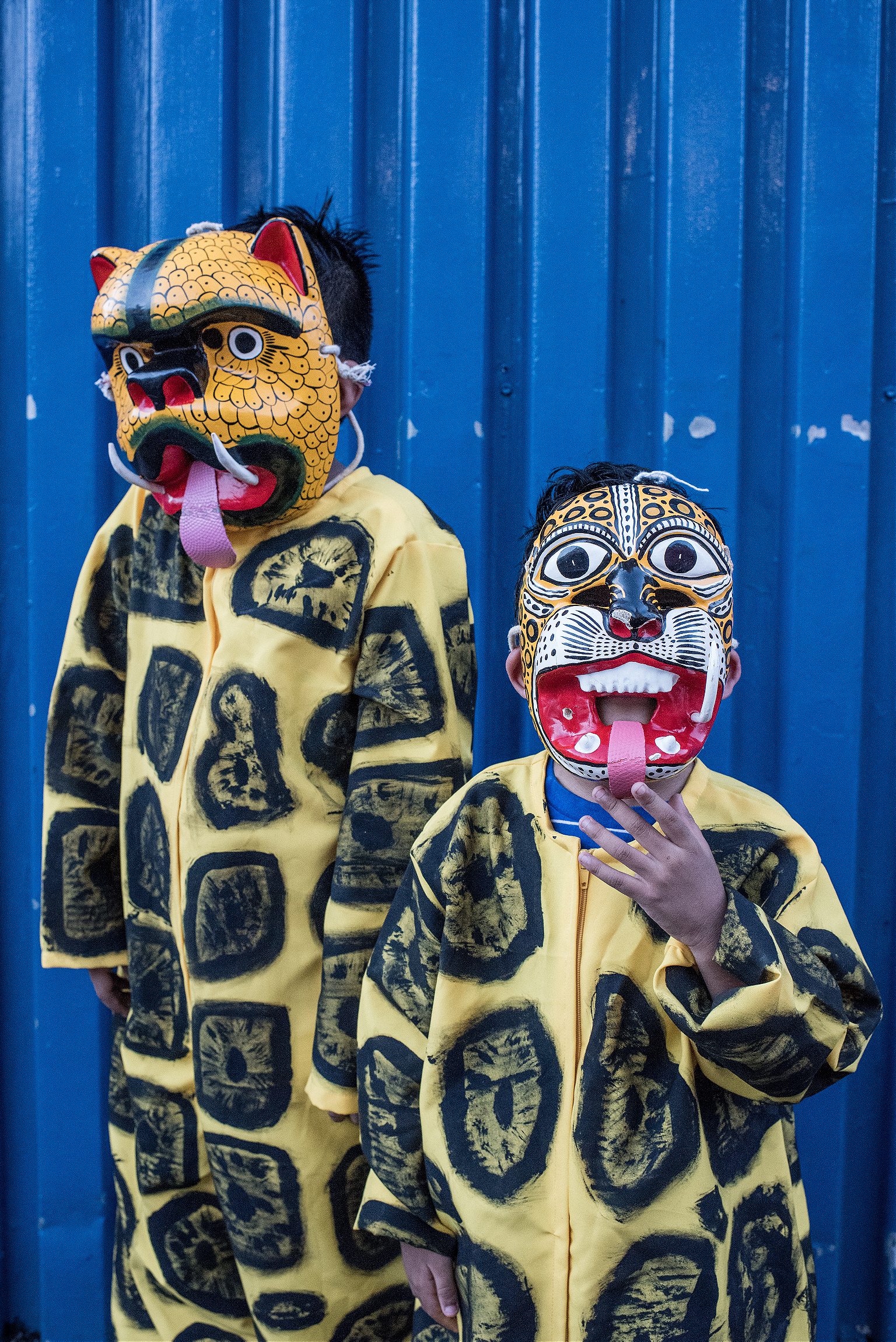
The dance represents a battle between the Zapotec and Chichimec tribes and the jaguar, and culminates with the jaguar’s defeat. Native to the Mixteca region of central Mexico, of which Piaxtla is a part, the dance of the tecuanes is a staple in religious festivities like the processions for Our Lady of Assumption where tecuanes accompany the statue into the church. A quintessential example of Piaxtla’s nuanced and rich history.
The images in this photo essay are from a procession that took place on August 6, 2018, from 422 Lorimer Street to the All Saints Church in Williamsburg, Brooklyn. Children as young as three participate in this spectacle, through which Piaxtecos of all ages honor this small, sleepy town in southern Puebla that their kin left behind, and which they have learned to love through stories and rituals. This is a glimpse into a culture that not only survives but thrives on the streets of New York.
